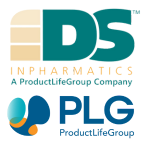It is vital to understand the drug development process and the myriad tasks and milestones that are critical to a comprehensive development plan in order to ensure commercial and scientific success.

Image Credit: DS InPharmatics
Even though the primary purpose of a well-designed regulatory strategy is to enable an efficient process for providing new, high quality and effective drugs for patients, it is also crucial to effectively maximize the return on investment.
Each step along the path to commercialization is crucial and an effective chemistry, manufacturing and controls (CMC) strategy and ensuing communication plan plays a key role in a product's overall success.
Crucial ROI considerations on the path to product approval
The shift from Phase 2 clinical (studies to assess the effectiveness of the drug for a particular indication in patients) to Phase 3 (expanded trial studies intended to acquire the additional information about effectiveness and safety required to evaluate the overall risk/benefit relationship of the drug) is a huge milestone for a drug sponsor.
Typically, the value drivers are safety, intellectual property, and efficacy. Often, unless there is a major weakness in the products profile, the CMC profile is seen as less important. For instance, for many small molecules, CMC development principally allows non-clinical and clinical development, and does not drive asset value.
Yet, a sponsor company has devoted considerable expertise, time, and expense to understanding the science of how the drug works in humans and how to clinically administer the drug product to minimize its medical risks and maximize its medical benefit by the end of Phase 2.
Have similar resources been expended to understand the science of how the drug product can be manufactured consistently to yield the desired quality?
For the majority of programs, the days when a manufacturing process that was successful in preparing clinical products for Phases 1 and 2 was also considered good enough to go forward into later-stage clinical trials and even commercial manufacturing are gone.
The aim of pharmaceutical drug development is to design a quality product and manufacturing process to provide the intended performance of the product consistently.
The knowledge and information which is gathered from development studies and manufacturing experience provides the scientific understanding to support the determination of the product manufacturing process, specifications, and manufacturing controls.
Today, due to amended guidance and the evolving regulatory harmonization initiatives, basing manufacturing decisions scientifically on enhanced product knowledge and product performance data over a larger scope of material attributes, process parameters and processing options are quickly becoming the norm.
At this stage (transition from Phase 2) execution is crucial to ensure that all activities needed for an eventual marketing approval are being planned for and any identified CMC development impediment is under discussion with the regulatory agencies.
Statistical approaches for data analysis and design of experiments (DOE)
The concept of process design and control has grown in favor as a tool for the process development scientist. Traditionally, a product control space has been proposed by the sponsor and is subject to regulatory assessment and approval.
Yet, factors like scale-up, economics and others can require modifications in the control scheme for the process as the product matures in its life cycle. The scientific basis for expanding or moving the product control space is typically developed out of necessity to cope with process shortcomings long after the original process development work is completed.
Developing and then filing a process which encapsulates the product control space can supply further “Process Knowledge Movement” out of this control space then would not be considered as a major change; yet, movement out of a rigidly defined process would be considered to be a huge change and would usually initiate a regulatory change control course of action.
The opportunity now exists to develop an approvable process in advance of commercial launch that anticipates and accommodates continuous improvement due to the publication of ICH Q8, Q10, Q11 etc.
This enables manufacturers to make alterations that optimize the process as necessary, without the requirement for major regulatory approval, as long as the product control space remains within an approved process, the agency agrees to what is filed up front in principle.
The utilization of statistical methods for designing experimental studies and carrying out data analysis has re-emerged as a fundamental activity, particularly in instances where a low amount of clinical batches are generated in clinical development at scale. Many raw materials and process parameters usually influence any given unit operation in a process.
It is not always practical to understand the impact of each raw material and input parameter on each output parameter. A combination of DOE and risk assessments has arisen as the method of choice to accelerate this task and can be found throughout literature.
The process development and manufacturing team must develop and document the scientific basis for the justification and approval in the Pharmaceutical Development areas of the CMC Module 3 in order to realize the advantages of this method.
The information which is utilized for this work comes in part from appropriately designed experiments which define and test the outer limits or edge of failure of the intended process to understand the influence on the critical quality attributes (CQAs).
At the time of process scale-up or tech transfer, before transferring or scaling the manufacturing operation, information and data about the process control space, in addition to the critical process parameters (CPPs) within which the process control space operates, must be readily available.
In order to maximize the chance that the Module 3 is received favorably the most important technique is to avoid exaggerations, to strive for clarity, and to discuss rather than hide negative findings and deficiencies. Claims that cannot be substantiated should be avoided, and keep in mind the age-old advice that if something is not documented, it is a rumor.
The process control space can be described in the section of the application that includes the description of the manufacturing process and process controls (3.2.S.2.2) as part of the proposed manufacturing process. Additional information can be supplied in the section of the application that addresses the controls of critical steps and intermediates (3.2.S.2.4) if appropriate.
The appropriate place to summarize and describe process development studies that provide the basis for the design space(s) is the manufacturing process development section of the application (3.2.S.2.6).
In the section of the application that includes the justification of the drug substance specification (3.2.S.4.5) the relationship of the process control space to the overall control strategy can be discussed.
Seeking out regulatory agency advice is your chance to avoid regulatory delays. It can only be a benefit for the sponsor to ensure that the reviewer clearly understands the science behind the manufacturing process and product since the agency in the end controls the drug fate.
This sounds simple, but for some sponsors it also sounds daunting. What if the agency wants much more to be done than is currently planned? What effect would that have on the corporate-established marketing approval date?
Sponsors have to recognize that it is about involving the regulatory agency, it is not about believing that it knows more about its process and product than the regulatory agency.
At the beginning of the process development effort regulatory stringency is lowest and it increases as the clinical trials process into later stages, reaching its highest level during commercial manufacturing operations.
The best opportunities to explore the edges of the required envelope of the process and product control and then further develop the scientific support and experience necessary to maximize the predictability and quality of the manufacturing process are therefore available during process development.
These opportunities are much more limited once commercial operations start. Sponsors need a reality check for their compliance and regulatory strategy at this transition from Phase 2 to Phase 3, and the agency can provide it.
Both EMA and FDA see the value of CMC-focused End-of-Phase 2 (EOP2)/Scientific Advice meetings with sponsors. They consider these meetings to be a critical interaction and particularly important.
Sponsors must encourage teamwork and communication with the regulatory authorities. An investment in process science can pay off in better manufacturing process control for later clinical stages and ultimately, commercial production.
Meetings between the regulatory agency and the sponsor can help to give assurance to sponsors that there will be no major CMC strategic surprises which could significantly delay the marketing applications review.
Approval gives assurance that a given compound meets requisite technical and quality elements to enable successful commercialization of the drug and so serves to increase asset value.
Regulatory correspondence can guide the CMC to areas of potential concern or areas where mitigation strategies will need to be developed or are underway, particularly feedback from regulatory agencies.
Crucially, while reviewing, the sponsor should make linkages to other disciplines, e.g., safety and clinical, which could be impacted and so should be addressed in the broader team context.
Acknowledgments
Produced from materials originally authored by Edward A. Narke from Design Space InPharmatics.
About DS InPharmatics 
DS InPharmatics (DSI) provides regulatory, technical, and project management consulting services to healthcare product companies that manufacture and/or market pharmaceuticals, biopharmaceuticals, and cellular and gene therapy products.
Since 2007 we have provided our clients with innovative strategies and exceptional quality work products intended to enhance product development, approval, and marketing presence. Whether advocating CMC strategy, directing CMC operations or developing CMC submission content that represent the best interests of emerging biotech, we focus on the critical CMC issues and build programs that enhance development.
In April 2021 we were thrilled to announce that DSI has just become part of ProductLife Group.
French-headquartered ProductLife Group (PLG) is well-known in the Life Sciences market. It has a track record of successfully managing global outsourcing programs and insourcing services for its international client base. The company is on a mission to help transform human health outcomes by optimizing regulatory affairs, safety & vigilance, and quality compliance for life sciences organizations worldwide.
The fit between our two organizations could not be more perfect. We will complement PLG's growing biotech services portfolio. US biotech sponsors recognize DSI as a leader in consulting for go-to-market strategies and RA pre-market consulting. At the same time, PLG has a strong reputation for managing end-to-end outsourcing of regulatory affairs and pharmacovigilance activities worldwide.
Our merger with PLG will harness our combined strengths, offering our clients on both sides of the Atlantic support with their developed drugs approvals and post-approvals compliance, plus advisory services on the best market strategies to deliver a rapid ROI on their development. Together we will offer our clients increased pharmacovigilance capabilities - including a QPPV; pharmacovigilance consulting; and a fully validated safety database - as well as complementary toxicology-related services; RIM/electronic document management services; and support for medical device regulatory requirements.
We see enormous potential in this new chapter for DSI and you, our clients. As a PLG company, we have the opportunity to become part of a global force in life sciences regulatory and compliance solutions and services, and we're incredibly excited to add our momentum to that effort.
Sponsored Content Policy: News-Medical.net publishes articles and related content that may be derived from sources where we have existing commercial relationships, provided such content adds value to the core editorial ethos of News-Medical.Net which is to educate and inform site visitors interested in medical research, science, medical devices and treatments.